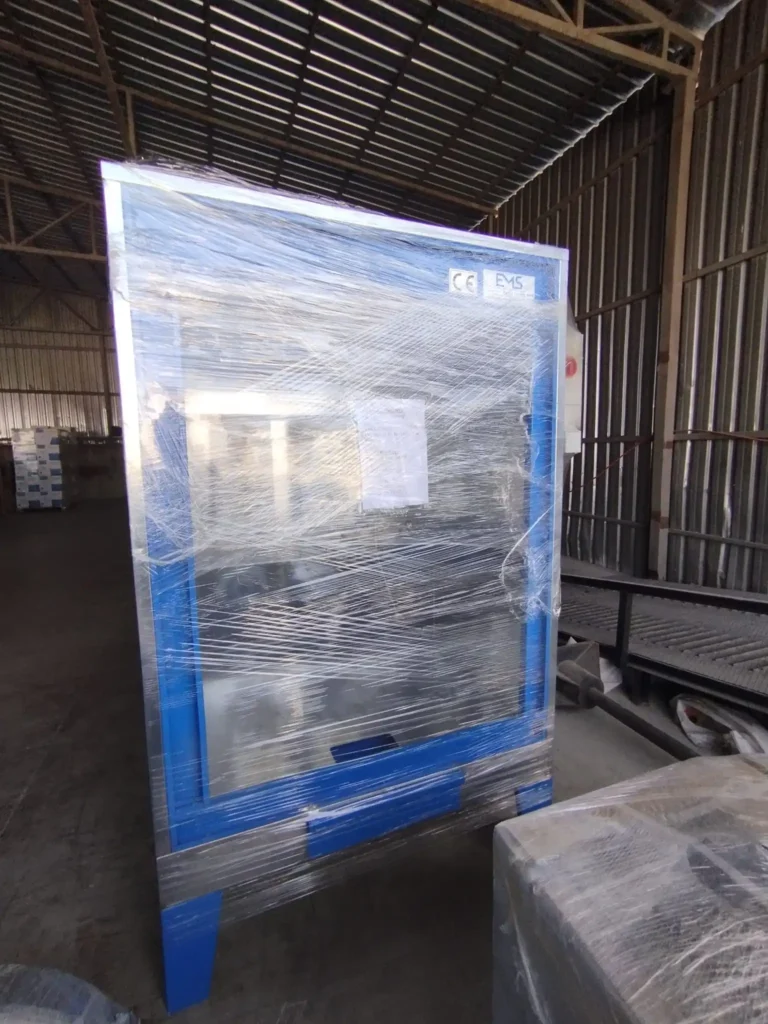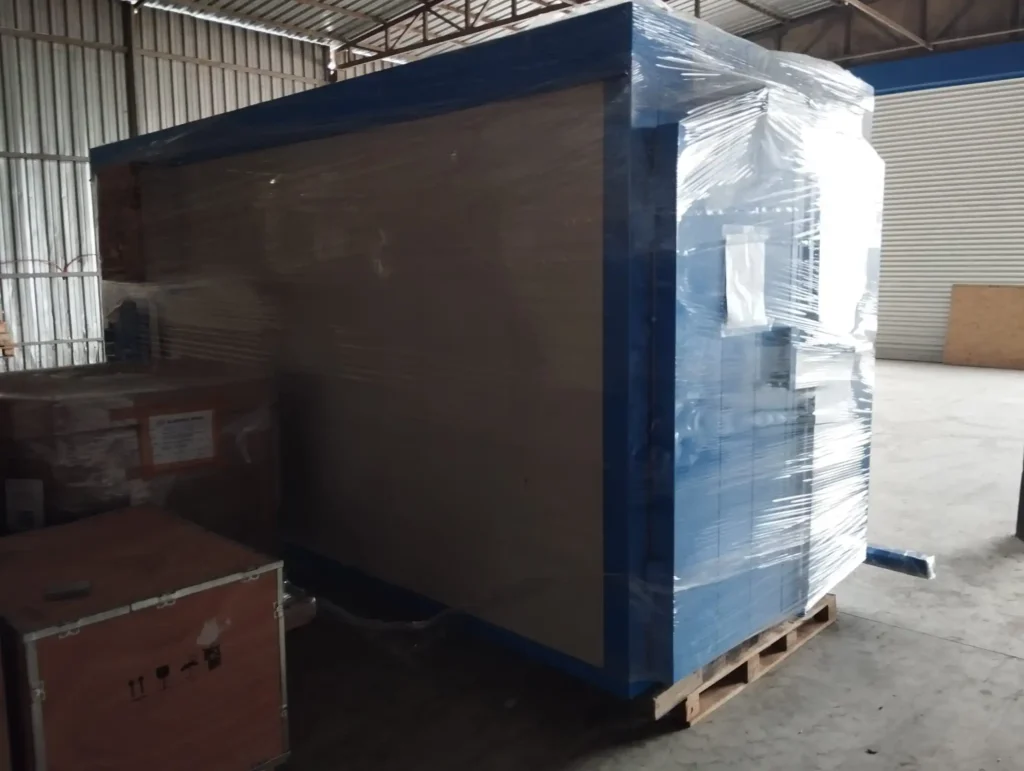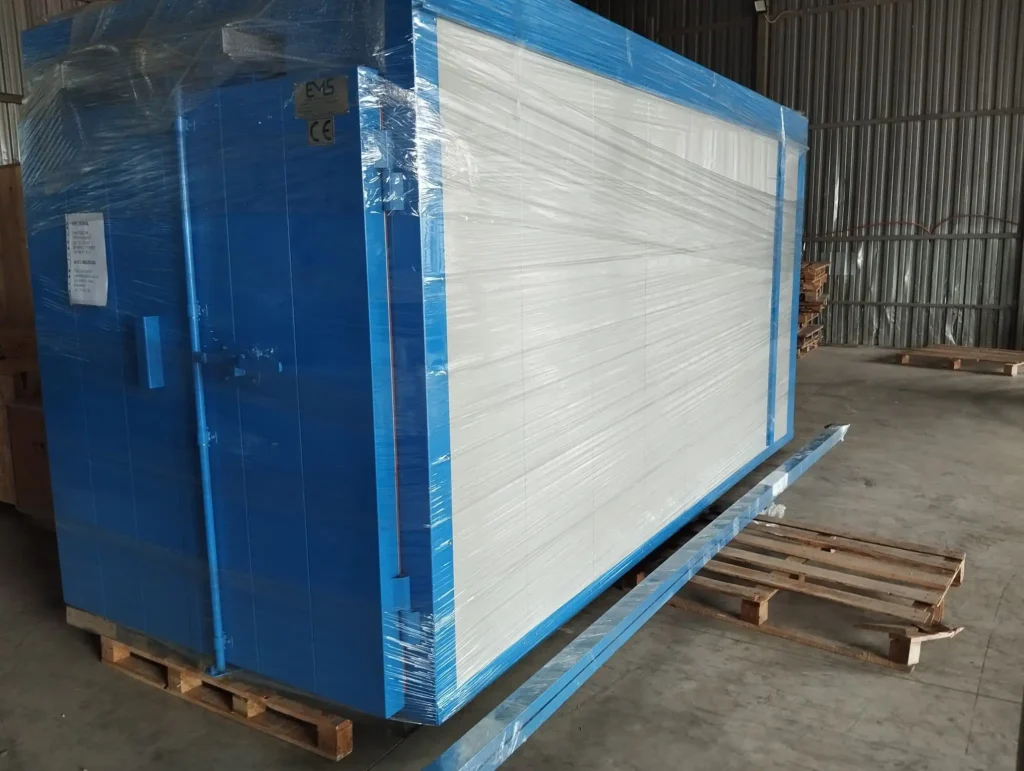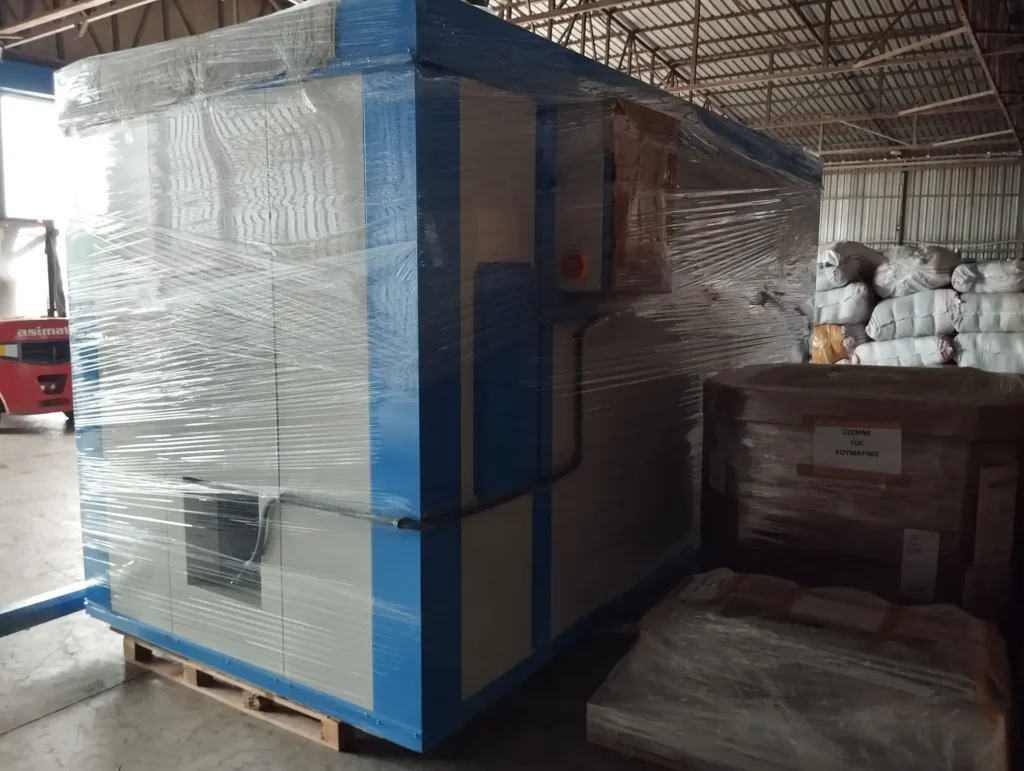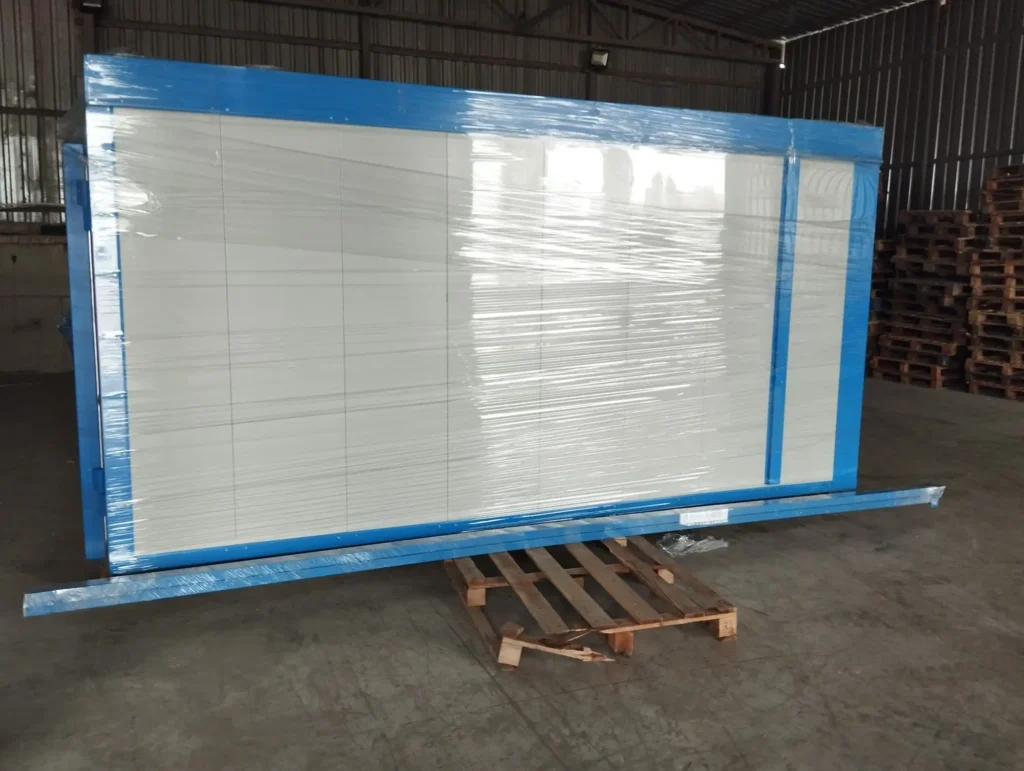
Powder Coating Hanger Cleaning: Cleaning powder coating hangers is an essential step in maintaining a smooth and efficient powder coating process. Here are some general guidelines for cleaning powder coating hangers:
- Regular Inspection:
- Regularly inspect the hangers for any signs of powder buildup or residue. This can include checking the hooks, bars, and other parts of the hanger system.
- Remove Excess Powder:
- Use a brush or compressed air to remove excess powder from the hangers. This can be done after each use to prevent powder accumulation.
- Soak in Solvent:
- For more thorough cleaning, you can soak the hangers in a suitable solvent. Common solvents include isopropyl alcohol or a specific solvent recommended by the powder coating material manufacturer. Allow the hangers to soak for a sufficient amount of time to soften and dissolve the powder.
- Scrubbing:
- After soaking, use a brush or a cloth to scrub away any remaining powder. Ensure that the hangers are completely clean, paying attention to corners and crevices where powder may hide.
- Rinse:
- Rinse the hangers with clean water to remove any solvent or remaining powder particles. Thoroughly rinse to ensure that no residue is left behind.
- Dry Completely:
- After rinsing, allow the hangers to dry completely before using them again. This can be done by air-drying or using a clean, dry cloth to wipe away any remaining moisture.
- Inspect Again:
- Once the hangers are dry, inspect them again to ensure that they are completely clean. Check for any spots that may have been missed during the cleaning process.
- Preventive Measures:
- Implement preventive measures to minimize powder buildup on hangers. This may include using anti-static solutions or coatings on hangers to reduce the adhesion of powder.
- Proper Storage:
- Store the hangers in a clean and dry environment to prevent contamination between uses. Proper storage can help maintain the cleanliness of the hangers and prolong their lifespan.
- Equipment Maintenance:
- Regularly inspect and maintain the powder coating equipment, including the hanger system, to ensure optimal performance. This includes checking for any worn parts or components that may need replacement.
Always follow the guidelines provided by the powder coating material and equipment manufacturers for specific cleaning recommendations. Additionally, consider any environmental regulations related to the disposal of solvents and cleaning materials.
Powder Coating Hanger Cleaning
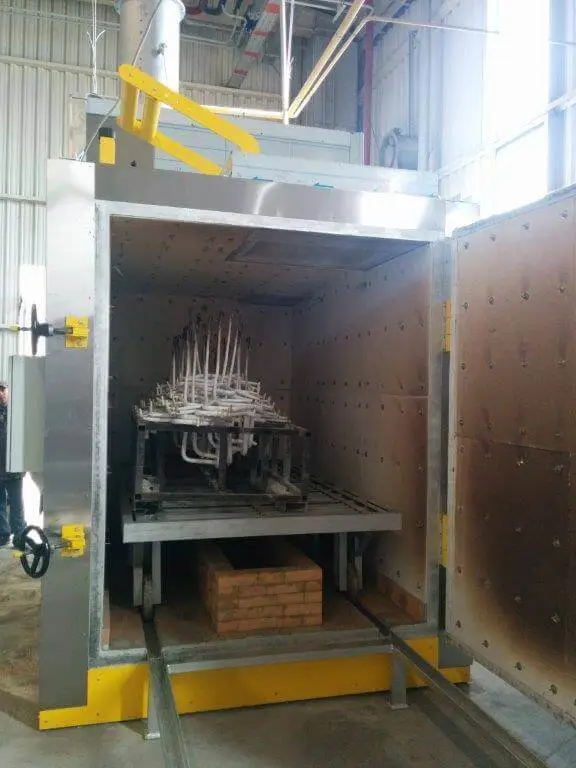
Powder coating is a highly efficient and environmentally friendly method of applying a protective finish to a wide range of materials. In this process, a finely ground powder, composed of pigments and resins, is electrostatically charged and sprayed onto the surface of an object. The electrostatic charge ensures an even distribution of the powder, and the coated object is then cured in an oven. The heat causes the powder particles to melt and fuse into a smooth, durable, and uniform coating. Powder coating provides excellent corrosion resistance, impact resistance, and an attractive finish, making it a preferred choice for various industries, including automotive, appliances, furniture, and more. To maintain the effectiveness of the powder coating process, it is essential to regularly clean the equipment involved, including the hangers used for hanging objects during the coating process.
Hanger Cleaning:
Hanger cleaning is a critical aspect of the powder coating process, ensuring the continued efficiency and quality of coated products. Powder coating hangers, typically made of durable materials such as metal, are used to suspend objects during the coating application. Over time, these hangers can accumulate excess powder and contaminants, leading to uneven coating and potential defects in the finished products. The hanger cleaning process involves meticulous removal of residual powder through methods such as brushing, air blowing, and, if necessary, the use of solvents. Proper hanger cleaning not only maintains the integrity of the coating process but also extends the lifespan of the hangers, reducing the risk of contamination and defects in subsequent coating jobs.
Hanger cleaning is a paramount facet within the realm of powder coating operations, intricately woven into the fabric of ensuring the sustained efficiency, consistency, and quality of coated products. Within the powder coating domain, hangers serve as indispensable components, providing a supportive structure to suspend objects during the coating application process. Typically crafted from robust materials such as metal, these hangers are subjected to the relentless accumulation of excess powder particles and potential contaminants over successive coating cycles.
The process of hanger cleaning is a meticulous endeavor, demanding a systematic approach to eradicate residual powder and contaminants adhered to the hanger surfaces. This is imperative to mitigate the risk of uneven coating distribution, defects, and compromised finish quality in the final products. Various techniques are employed in hanger cleaning, ranging from mechanical methods like brushing and air blowing to more comprehensive approaches involving the use of specialized solvents.
Beyond its immediate impact on the quality of coated products, hanger cleaning holds a dual significance by contributing to the longevity and sustainability of the hanger systems themselves. Regular and effective cleaning not only ensures a pristine surface for subsequent coating jobs but also prevents the build-up of contaminants that could otherwise compromise the structural integrity of the hangers.
In essence, hanger cleaning is a nuanced practice that extends beyond the removal of visible residues, embodying a meticulous and strategic endeavor to uphold the precision and reliability of the entire powder coating process.
Solvent:
Within the intricate realm of powder coating processes, a crucial player emerges in the form of solvents. Solvents are chemical compounds specifically designed to play a pivotal role in the cleaning and maintenance of equipment, particularly when it comes to tackling stubborn residues adhered to powder coating hangers. These chemical agents are chosen for their ability to dissolve and break down the intricate matrix of powder particles, facilitating the removal of tenacious deposits that may accumulate on the surfaces of hangers over successive coating cycles.
Commonly employed solvents in the context of powder coating hanger cleaning include isopropyl alcohol, a versatile and effective solution known for its ability to cut through powder residues without leaving behind harmful residues. The solvent application process involves immersing hangers in a solvent bath, allowing the chemical to penetrate and soften the adhered powder. This softening effect facilitates the subsequent mechanical removal of residues through brushing or wiping.
It is paramount to note that the choice of solvent should align with the specific powder coating material in use, ensuring compatibility and preventing any adverse reactions. Proper ventilation and adherence to safety protocols are integral aspects of solvent use, emphasizing the need for a well-ventilated workspace and appropriate personal protective equipment.
In essence, solvents play a pivotal role in the arsenal of tools employed in the pursuit of pristine powder coating applications, enabling the thorough cleaning and maintenance of hangers to uphold the standards of quality and efficiency in the overall coating process.
Anti-static Solutions:
In the intricate dance of precision within powder coating operations, the introduction of anti-static solutions emerges as a strategic and proactive measure. These solutions, formulated with a specific purpose in mind, are designed to address the persistent challenge of electrostatic charge within the powder coating environment, particularly concerning hangers used in the coating process.
Anti-static solutions function as a deterrent to the electrostatic forces that can lead to the undesired adhesion of powder particles to hanger surfaces. These forces, arising from the inherent electrostatic charge of powder particles, can result in uneven powder distribution and compromised coating quality. The anti-static solution, when applied to hanger surfaces, works to neutralize or diminish these electrostatic forces, creating an environment where powder particles are less inclined to adhere.
The application of anti-static solutions typically involves a systematic coating of hanger surfaces before they are introduced into the powder coating environment. This pre-emptive measure serves as a preventive shield, minimizing the challenges associated with excessive powder adhesion during the coating process. It is crucial to note that the selection of anti-static solutions should align with the specific requirements of the powder coating materials in use, ensuring compatibility and optimal effectiveness.
By incorporating anti-static solutions into the powder coating regimen, manufacturers and operators not only enhance the efficiency of the coating process but also contribute to the creation of a controlled and predictable environment, where the impact of electrostatic forces on hanger surfaces is mitigated, leading to consistent and high-quality coating applications.
Equipment Maintenance:
In the intricate tapestry of powder coating operations, equipment maintenance emerges as a cornerstone, playing a pivotal role in ensuring the longevity, reliability, and optimal performance of the entire coating system. This encompasses a comprehensive approach to inspecting, servicing, and, when necessary, replacing components within the powder coating equipment, with a specific focus on elements such as the hanger system.
Regular equipment maintenance routines involve systematic checks for wear and tear, calibration verification, and the identification of any potential issues that might compromise the efficiency of the powder coating process. The hanger system, being a critical component in supporting objects during coating application, is subject to rigorous scrutiny during maintenance procedures.
Inspecting hangers for signs of fatigue, corrosion, or deformation is integral to maintaining a seamless coating process. Worn-out or damaged hangers can lead to uneven suspension of objects, affecting the consistency of powder application and, subsequently, the quality of the coated products. Thus, prompt replacement of worn components and preventive measures to address potential issues become paramount in the overall maintenance strategy.
Regular lubrication of moving parts within the hanger system ensures smooth operation, minimizing friction and reducing the likelihood of premature wear. Calibration checks on electrostatic components, such as those responsible for powder application, contribute to the precision and uniformity of the coating process.
In essence, equipment maintenance, particularly concerning the hanger system, is not merely a reactive response to malfunctions but a proactive strategy aimed at enhancing the robustness and reliability of the powder coating process. By adhering to a well-structured maintenance regimen, manufacturers can uphold the integrity of their equipment, ensuring consistent, high-quality results in the realm of powder coating applications.
Powder Buildup:
Powder buildup, within the context of powder coating operations, is a phenomenon that demands careful consideration and management throughout the life cycle of equipment, particularly on hangers. This accumulation of excess powder particles occurs as a natural byproduct of the coating process and, if not addressed, can have detrimental effects on both the efficiency of the powder coating application and the longevity of equipment components.
Hangers, being integral to the suspension of objects during coating, are prone to gradual powder buildup over successive coating cycles. This accumulation may manifest as a thick layer on hanger surfaces, affecting their weight, balance, and overall functionality. As powder builds up on hangers, the risk of uneven coating distribution on suspended objects increases, leading to defects and inconsistencies in the final coated products.
The management of powder buildup involves a multi-faceted approach, starting with regular inspections to identify early signs of accumulation. Mechanical methods, such as brushing and air blowing, are often employed to remove loose powder. For more stubborn deposits, solvents may be utilized to soften and facilitate the removal of adhered particles.
Preventive measures, including the application of anti-static solutions on hangers, can also play a pivotal role in mitigating the extent of powder buildup. By reducing the electrostatic forces that contribute to adhesion, these solutions create an environment where powder particles are less likely to accumulate on hanger surfaces.
Efficient powder buildup management not only sustains the effectiveness of the powder coating process but also extends the operational life of equipment components, contributing to the overall reliability and quality of the coating applications.
Inspection:
Inspection is a fundamental and systematic process woven into the fabric of powder coating operations, serving as a critical checkpoint to ensure the integrity, quality, and efficiency of the entire coating process. The meticulous examination of equipment components, particularly the powder coating hangers, plays a pivotal role in identifying potential issues, defects, or irregularities that might compromise the final quality of coated products.
The inspection process for powder coating hangers involves a detailed examination of various facets, including structural integrity, surface condition, and the presence of any residues or contaminants. Regular inspections aim to catch early signs of wear, corrosion, or damage on hangers that could impact their functionality during coating applications.
In the realm of hanger cleaning, inspection acts as a proactive measure to identify areas where powder buildup may occur. By detecting and addressing these issues early on, manufacturers can prevent defects in the coating process and maintain a high standard of finished product quality.
Inspections may be conducted visually or with the aid of specialized tools, depending on the specific requirements of the hanger system and the overall coating operation. Advanced inspection techniques, such as non-destructive testing, may be employed to assess the integrity of hanger materials without causing any damage.
The frequency of inspections may vary based on factors such as production volume, material types, and environmental conditions. An effective inspection regimen contributes to the overall reliability of the powder coating process, allowing manufacturers to address potential issues proactively and uphold the standards of quality in their coated products.
Preventive Measures:
Preventive measures within the realm of powder coating operations are a strategic and proactive approach to mitigating potential challenges and optimizing the overall efficiency and longevity of equipment, including hangers. These measures encompass a spectrum of actions and strategies designed to prevent issues before they escalate, ensuring a smoother and more consistent coating process.
In the context of hanger cleaning, preventive measures are crucial for minimizing the risk of powder buildup, uneven coating distribution, and other challenges that may compromise the quality of coated products. One primary preventive measure involves the application of anti-static solutions on hanger surfaces. These solutions, by reducing the electrostatic forces that contribute to powder adhesion, create an environment where powder particles are less likely to accumulate on hangers.
Regular and systematic cleaning routines can also be considered a preventive measure. By incorporating routine cleaning into the operational schedule, manufacturers can prevent the build-up of excess powder on hangers, maintaining their functionality and prolonging their operational life.
Additionally, manufacturers may implement preventive measures in the form of training programs for operators and maintenance personnel. Proper training ensures that individuals responsible for the powder coating process are well-versed in best practices for hanger cleaning, storage, and overall equipment maintenance.
The choice of quality materials for hangers is another preventive measure. Using durable and corrosion-resistant materials can reduce the likelihood of premature wear and damage, contributing to the longevity of the hanger system.
In essence, preventive measures are the proactive steps taken to create a controlled and optimized environment for powder coating operations. By addressing potential issues before they manifest, manufacturers can uphold the integrity of their equipment and consistently deliver high-quality coated products.
Rinse:
Rinsing, in the context of powder coating hanger cleaning, is a crucial step in the overall process of maintaining equipment hygiene and ensuring the consistent quality of powder-coated products. This stage involves the careful removal of residual cleaning agents, solvents, and any remaining powder particles from the hangers after the cleaning process.
Once hangers have undergone cleaning procedures, which may include brushing, air blowing, and the use of solvents, a thorough rinse is essential to eliminate any lingering residues. Rinsing serves multiple purposes, including the removal of dissolved powder particles and solvents, preventing potential contamination of subsequent coating batches.
The rinsing process typically involves the use of clean water, ensuring that hangers are thoroughly washed to remove any remaining cleaning agents. The choice of water quality is significant to prevent the introduction of impurities that could compromise the effectiveness of the rinse.
Efficient rinsing is particularly vital when solvents are used during the cleaning process. Complete removal of solvents is critical to prevent any adverse reactions with the powder coating material during subsequent applications. Thorough rinsing also contributes to the prevention of cross-contamination between different colors or types of powder coatings.
Beyond cleanliness considerations, rinsing plays a role in maintaining the appearance of coated products. Residual cleaning agents or powders left on hangers could potentially transfer to the objects being coated, leading to defects or imperfections in the final finish.
In essence, the rinsing stage is a meticulous and integral part of the hanger cleaning process, ensuring that hangers are pristine, free from contaminants, and ready for the next round of coating applications.
Storage:
Storage in the realm of powder coating operations is a critical aspect that extends beyond mere physical placement to encompass a strategic and careful approach to maintaining the cleanliness and integrity of equipment, particularly hangers. Proper storage practices are essential to prevent contamination, preserve the effectiveness of hanger systems, and ensure the seamless continuation of the powder coating process.
Hangers, once cleaned and rinsed, should be stored in a controlled environment that minimizes exposure to dust, moisture, and other potential contaminants. Storage areas should be well-ventilated and maintained at appropriate temperatures to prevent the formation of condensation, which could lead to corrosion on metal hangers.
Consideration must also be given to the arrangement of stored hangers. Proper spacing and organization help prevent physical damage, such as scratches or dents, which could compromise the functionality of the hanger system during subsequent coating applications.
If hangers are coated with anti-static solutions as a preventive measure, storage practices should ensure that the efficacy of the anti-static coating is maintained. Avoiding prolonged exposure to direct sunlight or extreme environmental conditions helps preserve the effectiveness of anti-static treatments.
Labeling and tracking systems may be implemented to keep an organized inventory of hangers, facilitating easy retrieval and monitoring of their condition. Regular inspections during storage can also identify any signs of wear, corrosion, or damage that may have occurred during the storage period.
In essence, proper storage practices contribute to the overall efficiency and reliability of powder coating operations. By adhering to meticulous storage protocols, manufacturers can ensure that hangers remain in optimal condition, ready for deployment in subsequent coating cycles, and that the coated products consistently meet the desired quality standards.
Powder Coating Machinery At Competitive Prices
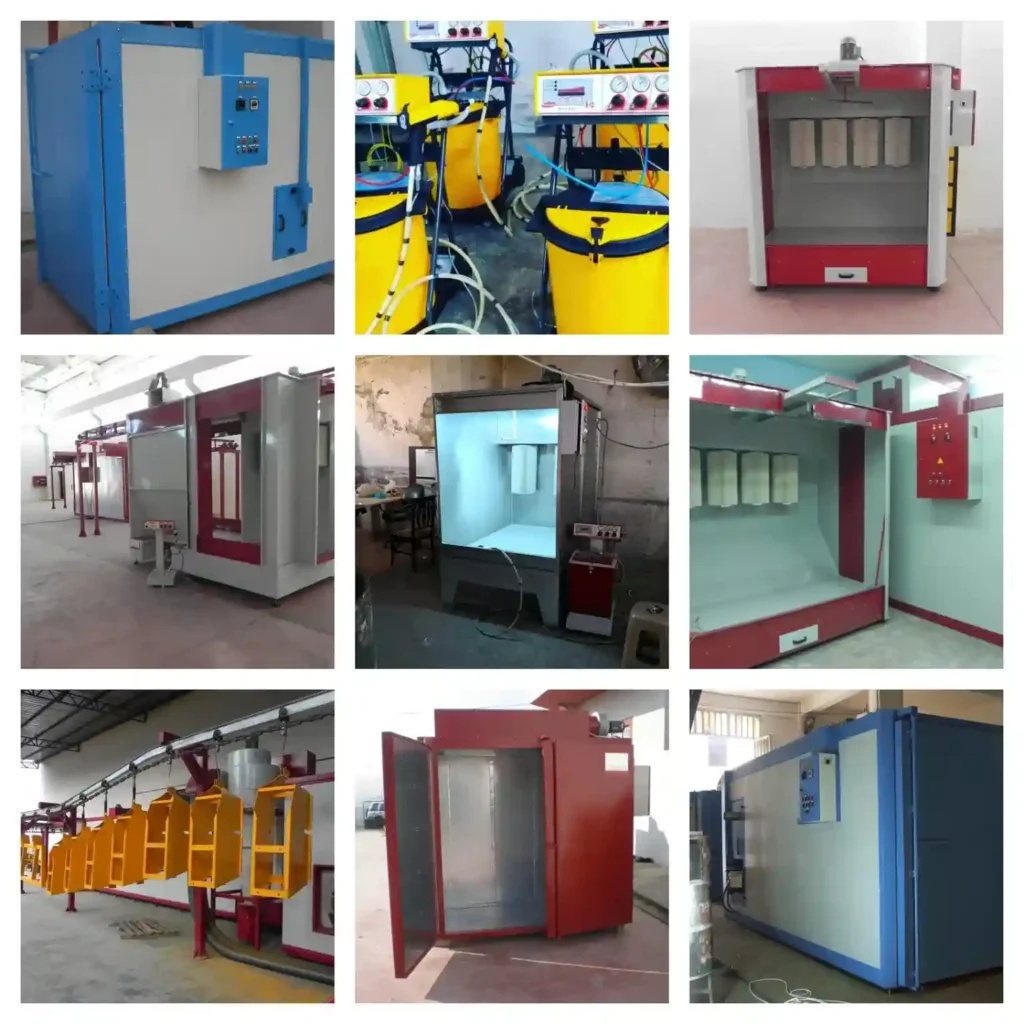
Powder coating equipment is used to apply a thin layer of powder over a metal surface. This type of coating is applied by an electrostatic process and is a very popular method for finishing metal parts.
This type of equipment can be divided into two main categories: automatic and manual. Automatic booths are more popular because they provide better production rates, but they are also more expensive.
A powder booth is an enclosure in which the powder-coating process takes place. Powder-coating equipment includes an oven where the parts are heated to activate the powder, a gun that sprays or brushes on the powder, a conveyor belt that moves parts through the oven, and cartridge-type guns for applying thicker coatings with less overspray.
Powder coating is a technique that is used to provide a finish to metal parts. This technique has been in use for many years and it is still one of the most popular techniques today.
Powder coating equipment consists of booths, ovens, guns, machines, lines and conveyors. A booth can be either automatic or manual. An automatic booth is more expensive than a manual booth but it is also faster and more efficient.
Thermoset powder: Thermoset powders are the most common type of powder coating. They undergo an irreversible chemical reaction during the curing process, forming a hard, crosslinked network that is highly resistant to heat, chemicals, and scratches.
Thermoplastic powder: Thermoplastic powders do not undergo a chemical reaction during the curing process. Instead, they simply melt and fuse together when heated. This makes them less durable than thermoset powders, but they are also more re-flowable, which can be useful for certain applications.
Epoxy powder: Epoxy powders are known for their excellent corrosion resistance and chemical resistance. They are also very hard and durable. However, they can be brittle and are not as UV resistant as some other types of powder coating.
Polyester powder: Polyester powders are the most versatile type of powder coating. They offer a good balance of properties, including durability, corrosion resistance, UV resistance, and chemical resistance. They are also available in a wide range of colors and finishes.
Polyurethane powder: Polyurethane powders are known for their flexibility and toughness. They are also very resistant to abrasion and impact. However, they are not as heat resistant as some other types of powder coating.
Acrylic powder: Acrylic powders are known for their excellent UV resistance and weather resistance. They are also very glossy and have a high scratch resistance. However, they are not as chemically resistant as some other types of powder coating.
Nylon powder: Nylon powders are known for their excellent chemical resistance and abrasion resistance. They are also very flexible and impact resistant. However, they are not as heat resistant as some other types of powder coating.
Fluorocarbon powder: Fluorocarbon powders are known for their excellent chemical resistance, UV resistance, and non-stick properties. They are also very durable and easy to clean. However, they are relatively expensive.
Silica powder: Silica powders are used as fillers and extenders in powder coatings. They can help to improve the adhesion, flow, and leveling of the coating.
Metal flake powder: Metal flake powders are used to create decorative finishes. They can be used to add sparkle, shine, or a metallic look to a powder coating.
Not only do we manufacture our powder coating equipment, we also ship them worldwide to your facility with care
We’re not just the manufacturers of your powder coating equipment, we’re also your worldwide delivery partners.
At EMS Powder Coating Equipment, we understand that getting your powder coating equipment to you quickly and safely is just as important as manufacturing it to the highest standards. That’s why we offer worldwide delivery services to all of our customers.
We work with a network of experienced and reliable shipping partners to ensure that your equipment arrives on time and in perfect condition. We also offer a variety of shipping options to fit your budget and needs.
Whether you need your equipment shipped to a local address or to an international destination, we can help. We’ll work with you to choose the best shipping option for your needs and to keep you updated on the status of your shipment every step of the way.
So when you choose EMS for your powder coating equipment, you’re not just getting the best products on the market, you’re also getting the best possible delivery experience.
Contact us today to learn more about our worldwide delivery services.


